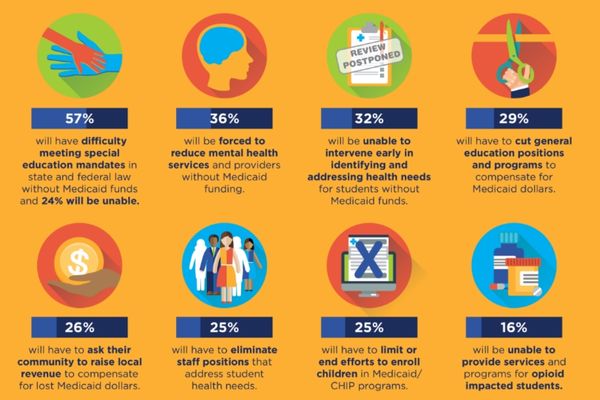Shortchanging Athletics in Our Students' Lives
August 01, 2017
My View
Now starting for the Golden State Warriors at 5-foot-8 and 150 pounds with no high school or college basketball experience is Alex ….
OK, he says, “If I can’t make the NBA, then I’ll be a mechanic or something like that.”
Alex has spent four years in high school but is still a sophomore academically. He’s a dreamer but sees no real future. For him, the best part of the day is playing basketball during lunch. Time is running out. Alex is losing interest and sees no point in going to school. That is, until the varsity basketball coach makes Alex the team manager. Now as part of a team, shooting an occasional free throw at practice and sitting at the end of the bench, he finds a purpose and a reason for school. But after this season, his athletic eligibility will run out.
Restricting Eligibility
As a superintendent and former high school principal, I have come to appreciate that the most effective tool in dealing with students considered at risk of failure is our after-school activities. These activities have been the hook needed to keep those students in school. They provide each student with the opportunity to find a niche, stability, support, comraderie and purpose.
As educators, we long have realized that for most student athletes, no promise of stardom exists, let alone a professional playing career or a full-ride college athletics scholarship. But a student’s membership on a high school team, in the marching band or as part of some other extracurricular activity has proven to improve attendance, decrease disciplinary referrals and serve as the difference maker between dropping out or graduating. For most of us, this valuable tool is being kept locked in our tool box.
I recognize that athletics is a privilege, not a right, for a student. Participation in school sports is something to be earned through good grades and good behavior, and rules must be enforced to make the game fair. But why must our ability to assist at-risk students be restricted and controlled by antiquated eligibility rules?
Proving Hardship
As a member of my state athletic association’s board of directors, I am a witness to the power of athletics and its lost potential for even greater benefit. Every month, I receive a fat packet of eligibility appeals from high school athletes who’ve been barred from participation. The process can be daunting for a student and family as they are asked, in essence, to bare their souls and prove a hardship to obtain or maintain athletic eligibility. In many cases, they do so without the support of the school system.
While I understand the necessity of eligibility enforcement, I always am amazed at why a teenager would go to this trouble. With the number of other opportunities outside of the school day, why go through the stress and humiliation of sharing personal details before a hearing panel of 19 strangers? Still, they are lined up every month, asking us for the chance to play and demonstrating why their appeal should be granted.
Please understand that students’ poor grades and poor behavioral choices cannot be appealed. These actions are deemed to have been within the students’ control and do not qualify as a reason for an eligibility waiver. Ironically, the very factors that may place a student at risk and result in a student needing extra time to succeed also prevent all but a few from participating in after-school activities. In some cases, eligibility rules can impact those seeking to change high schools for educational reasons or families that face true financial hardship.
A Human Toll
When we make decisions about funding athletic programs in our school districts, we must consider the cost beyond dollars. When we are asked to grant eligibility waivers, we must look beyond the possibility of a team gaining a better athlete and instead consider the direct impact our decisions will have on the future of an at-risk student and the true purpose of high school athletics.
As a superintendent, I believe we must play a more active role in our athletic associations at local and state levels. Athletics is not just something that belongs on the fringe of our educational systems. It’s an essential tool for building the whole student and, in some cases, it’s our most effective tool.
Advertisement
Advertisement
Advertisement
Advertisement



.png?sfvrsn=3d584f2d_3)